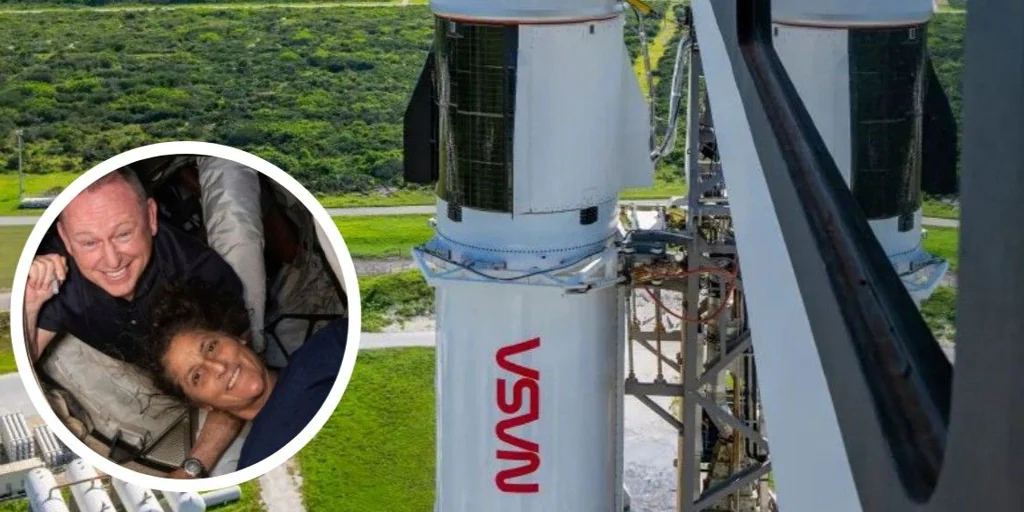This Saturday, Crew-9 will lift off from Cape Canaveral at 1:17 p.m. (7:17 p.m. in Spain), and in principle, it will carry a new batch of astronauts to the International Space Station. (ISS is its abbreviation in English), which happens every, more or less, six months. However, the mission ended up being a 'rescue plan' for astronauts stranded in space, and Suni Williams and Butch Wilmore, who accompanied another ship, finally returned empty-handed in early September, after recording several failures. A 'space soap opera' has made headlines around the world this summer and this Saturday marks its final (if not definitive) episode.
It all started on June 5, shortly after Wilmore and Williams took off aboard the Starliner (owned by the ever-controversial Elon Musk), the proposed Boeing replacement for SpaceX's Crew Dragon. It was the first manned test flight, so the teams were all prepared for things to go wrong. However, since its arrival in orbit, the Starliner had problems: first with several helium leaks (in addition to those discovered before loading and a month late take-off) and then with the engines: 5 out of 28 thrusters failed, which caused problems. When docking at the spacecraft's destination, the ISS. Their trip, planned for a week, dragged on for months.
After a full summer of tests — on the damaged ship and at NASA facilities in White Sands, New Mexico, with replica thrusters, and press conferences that gave no specific date for the return of the stranded astronauts — at the end of August, Williams and Wilmore will not be back on the Starliner, but instead on the SpaceX Crew Dragon. NASA announced. The Starliner, for its part, will return home alone.
“Spaceflight is dangerous even in its safest and most conventional forms. An experimental flight, by nature, is neither safe nor conventional – Bill Nelson, NASA administrator, said at a press conference. “Put Butch and Suni on the International Space Station to bring Boeing's Starliner home without a crew. The result is a result of our commitment to safety, our core value.”
Consequences of NASA's decision
And that decision had consequences. The first is a one-month delay in the launch of Crew-9, the next orbital mission to the ISS. The new crew could not dock until the Starliner had dropped from the orbiting lab. When NASA finally decided that Williams and Willmore would return home aboard Crew Dragon, the Crew-9 crew was reduced from four to two, consisting of NASA astronauts Nick Hage, Gina Cartman, and Stephanie Wilson, and Roscosmos astronaut Alexander Korbunov. Room for two trapped. With that, Cartman and Wilson left, Hack and Korbunov will fly to the ISS as scheduled this Saturday, returning next February with Williams and Wilmore.
The decision to have stranded astronauts stay longer and not return immediately was driven by complex cycles on the ISS: launching each spacecraft back and forth, planning based on resources and supplies, is not a small expense. In fact, this is not the first time that a decision has been made to extend a space mission: the last time was a year ago, when NASA astronaut Frank Rubio had to stay for another six months (a total of one year) after several escapes. Recorded on different Russian Soyuz ships.
“It would have been a safe landing”
After the Starliner returned to Earth with a nearly perfect mission, Steve Stich, manager of NASA's Commercial Group, admitted during a press conference that “it would have landed safely and successfully with the crew on board.” However, recalling the lessons learned from the Challenger and Columbia space shuttle disasters, NASA insisted that it did not want to put astronauts at risk more than necessary. “The decision to house Butch and Suni on the International Space Station and bring home the decommissioned Boeing Starliner was a result of a commitment to safety,” said NASA Administrator Bill Nelson. “Since then, NASA has worked hard to create an environment where people are encouraged to come forward and speak their minds, and I think today is a great example of that.”
Besides being a “rescue mission” of sorts, Crew-9 will be historic for other reasons. This is the first crew launch from Space Launch Complex 40 (SLC-40) at the Cape Canaveral Space Force Station in Florida, and the second crew launch overall from the Space Force base, following the test launch of Starliner. June.





